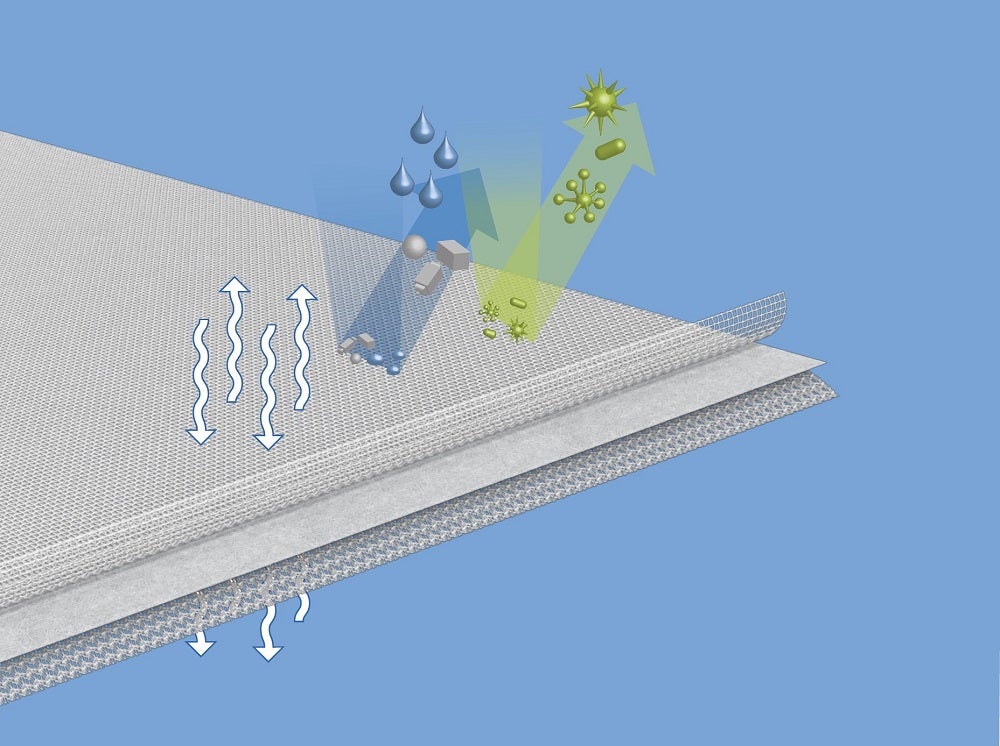
Membrane research has experienced a huge increase in interest across the medical applications industry. According to a market report published in September 2022i the medical membranes market size was valued at $2.9bn in 2021 and is estimated to reach a CAGR of 9.3% over the forecast period of 2022 to 2029, with the Asia Pacific region predicted to witness the fastest growing market share.
The latest developments are taking medical membranes in new and sometimes surprising directions, from nebulisation of active ingredients, micro-sensing, media delivery and drug dosing to tissue engineering and disease diagnostics.ii Some developments are taking medical membranes beyond the separation function of the membrane itself to realising multifunctional integration.
Tissue engineering
In tissue engineering, membranes can act as scaffolds, supporting cell growth, and by utilising biodegradable membranes, allow the regeneration of new tissues. Although this technique has been used for a couple of decades, more recent advancements include the use of 3D printing technology and interconnected perfusable microchannel networks. This interconnected microporous structure of the scaffold can facilitate the penetration of nutrients and growth factor.
Drug delivery
Drug delivery systems (DDSs) depend heavily on membrane permeability, and due to recent modification and improvements, membranes with enhanced bioavailability can provide selective cytotoxicity and enable targeted recognition, achieving ‘smart’ on-demand drug release. By developing membranes with different stimulus responsiveness, the release rate of the DDSs can be controlled by external trigger or feedback information.
Disease diagnosis
Growing demand for chronic disease prevention and treatments has led to a surge of research into wearable devices capable of continuous and real-time monitoring. In addition, wearable devices can be used for both detection and drug release, through the combination of membrane separation and biosensing. By integrating strain sensors for force detection, microneedles for effective transdermal delivery, and drug reservoirs, transdermal delivery patches are being developed for controllable drug delivery. Thin, porous membranes are now also being integrated into microfluidic devices for use in ‘lab-on-a-chip’ devices.
Microfiltration
Membranes continue to be widely used for microfiltration in the medical field, especially for venting (air), sterile filtration 0.2um (liquid and air) and liquid microfiltration. Microfiltration applications include perfusion, cardiopulmonary filtration, diagnostics, biopsies, air filtration, embolic protection, and composite filters for bacteria and viruses (with additional nano-membranes).
Monofilament fabrics currently provide the best results, reducing risks for patients and protecting them from the risk of an emboli or cerebral damage. In one recent innovation, cardiologists are now using unique folding filtersiii during Transcatheter Aortic Valve Implant (TAVI) heart surgery to catch and hold microscopic pieces of debris dislodged during the valve implant, that if left behind could cause a stroke.
The latest in microfiltration
Driving such innovations forward is leading global manufacturer of precision medical fabrics Sefar AG. Mira Hofmann, the company’s corporate innovation project manager, explains the latest product developments of its medical membrane microfiltration technologies, including new advancements in the field using non-shedding nanofibers.
“Our modular Sefar Puretex system allows adjustment of the pore size (with narrow distribution) by spinning parameter, surface modifications, fabrication technologies and, not forgetting, in the selection of different polymers used for the membrane itself and the protection layers,” says Hofmann.
“In terms of material performance, Sefar’s solution is characterised by excellent permeability properties. Due to the special layering system the composite membrane is robust and flexible. It has a great resistance to mechanical stress during fabrication, assembly, and when in use.” Further benefits include good hydrophobicity/oleophobicity or hydrophilicity/good wettability, depending on an application’s requirements.
Production methods used by Sefar are unique, with Sefar’s patented technology characterised by a high membrane surface-volume ratio. Fibres that are just a few nanometers in diameter, create billions of homogeneous pores that enable unparalleled flow rates in venting and liquid filtration applications. The membrane is also embedded into technical fabrics for protection and stabilisation.
Future trends for medical membranes
With many new possibilities for the use of medical membranes currently being discussed, Sefar is taking a close look at some of the current challenges. “It’s a challenge to ensure the biocompatibility for membranes,” says Hofmann. “Due to the constant changes in standards, the introduction of active substances must be well clarified, especially for the coating process.”
Sefar has its own plans to expand its current range of medical membranes, Hofmann reveals: “Sefar’s development team sees enormous potential for the medical market by generating functionality. Our target is the growth in existing markets and development of new areas. This includes, for example, finding solutions for the cell expansion market.”
According to Hofmann, Sefar is expanding the existing Espin (electrospinning) membrane composite portfolios to include additional pore sizes and polymers: “We are constantly testing new production methods and coatings to expand our membrane product portfolio and to meet the increasing market requirements and environmental legislation and regulations.”
To find out more, download the whitepaper below.
[i] https://www.datamintelligence.com/research-report/medical-membranes-market
[ii] https://www.sciencedirect.com/science/article/pii/S2772421222000083
[iii] https://www.medicaldevice-network.com/sponsored/how-a-new-cardiovascular-filtration-system-is-reducing-stroke-risk-in-tavi-transcatheter-aortic-valve-implant-for-the-patients-safety/


